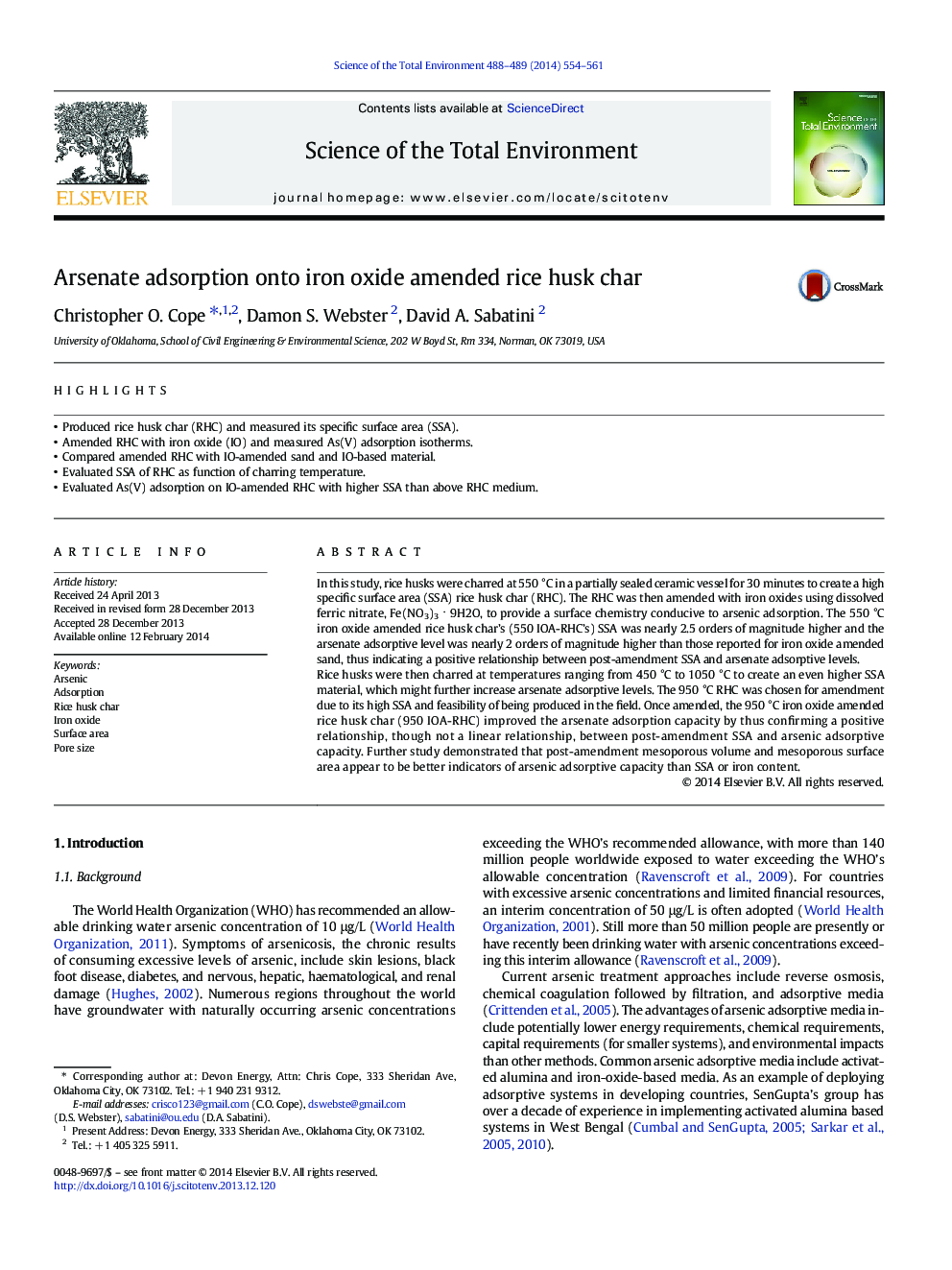| Article ID | Journal | Published Year | Pages | File Type |
|---|---|---|---|---|
| 6330293 | Science of The Total Environment | 2014 | 8 Pages |
â¢Produced rice husk char (RHC) and measured its specific surface area (SSA).â¢Amended RHC with iron oxide (IO) and measured As(V) adsorption isotherms.â¢Compared amended RHC with IO-amended sand and IO-based material.â¢Evaluated SSA of RHC as function of charring temperature.â¢Evaluated As(V) adsorption on IO-amended RHC with higher SSA than above RHC medium.
In this study, rice husks were charred at 550 °C in a partially sealed ceramic vessel for 30 minutes to create a high specific surface area (SSA) rice husk char (RHC). The RHC was then amended with iron oxides using dissolved ferric nitrate, Fe(NO3)3 â 9H2O, to provide a surface chemistry conducive to arsenic adsorption. The 550 °C iron oxide amended rice husk char's (550 IOA-RHC's) SSA was nearly 2.5 orders of magnitude higher and the arsenate adsorptive level was nearly 2 orders of magnitude higher than those reported for iron oxide amended sand, thus indicating a positive relationship between post-amendment SSA and arsenate adsorptive levels.Rice husks were then charred at temperatures ranging from 450 °C to 1050 °C to create an even higher SSA material, which might further increase arsenate adsorptive levels. The 950 °C RHC was chosen for amendment due to its high SSA and feasibility of being produced in the field. Once amended, the 950 °C iron oxide amended rice husk char (950 IOA-RHC) improved the arsenate adsorption capacity by thus confirming a positive relationship, though not a linear relationship, between post-amendment SSA and arsenic adsorptive capacity. Further study demonstrated that post-amendment mesoporous volume and mesoporous surface area appear to be better indicators of arsenic adsorptive capacity than SSA or iron content.
